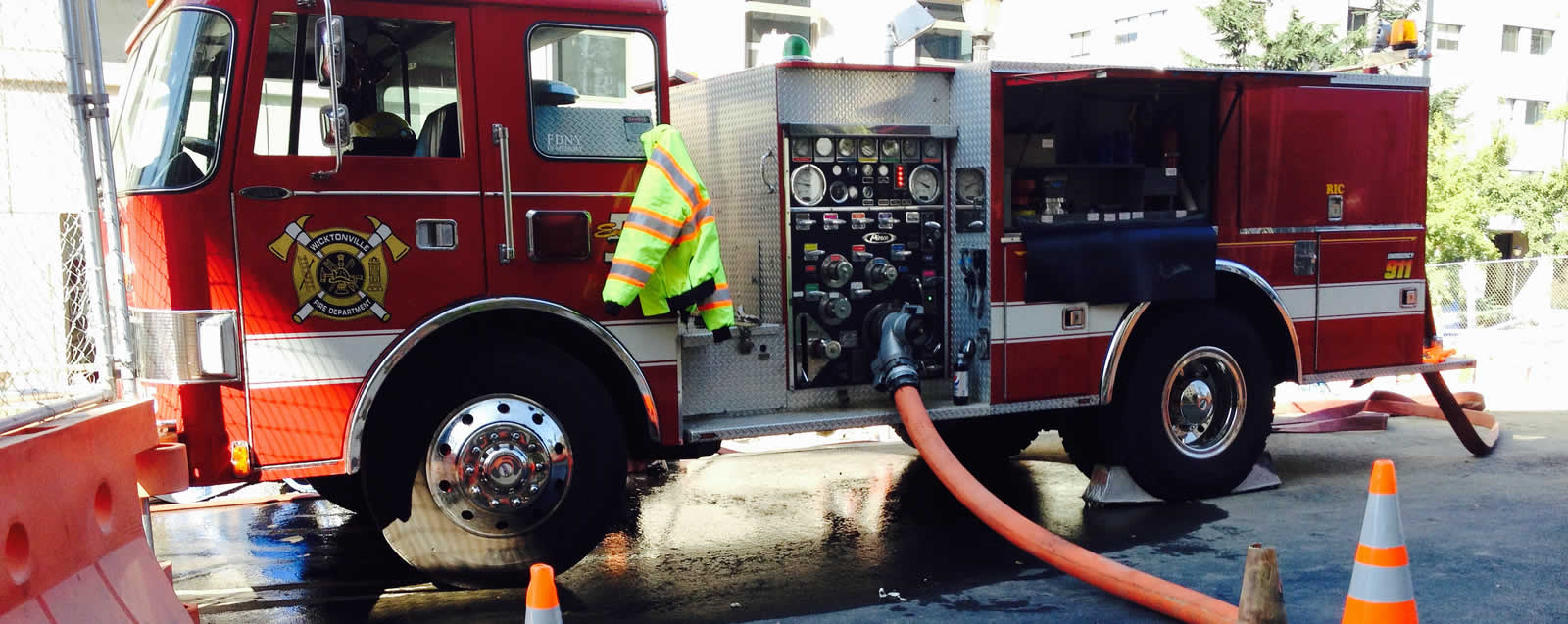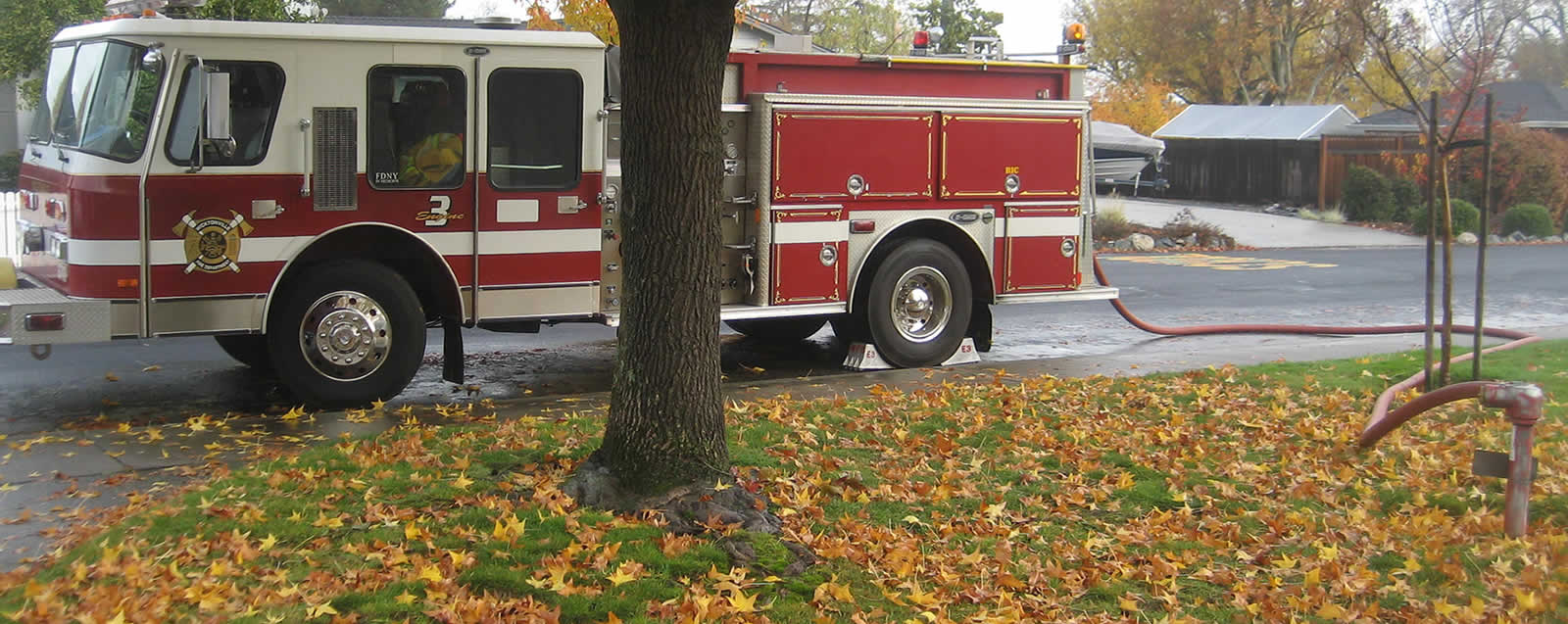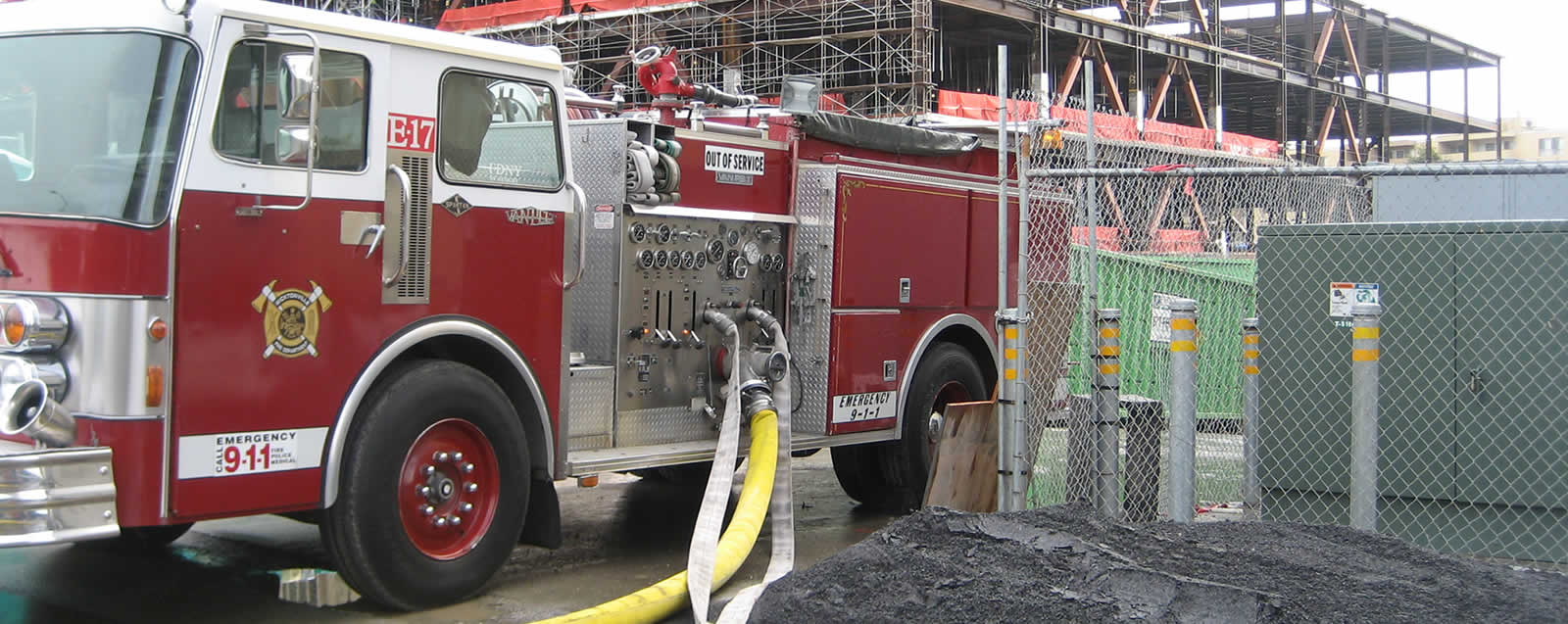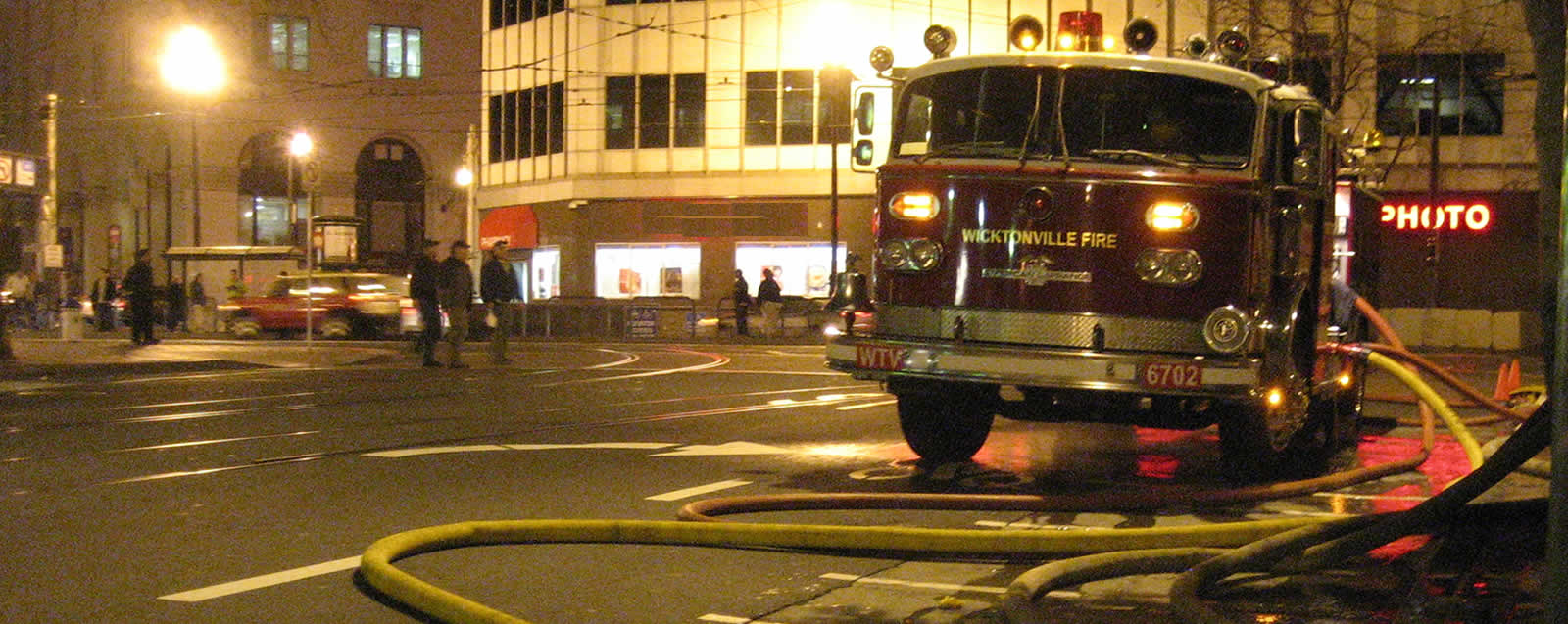Information for Property Owners and Managers
The regular inspection, maintenance and testing of the fire sprinkler system is both required by the local fire department (also known as the Agency Having Jurisdiction, or AHJ), under state laws and pursuant to federal standards as published by the National Fire Protection Association (NFPA) in NFPA 25: Standard for the Inspection, Testing and Maintennce of Water-Based Fire Protection Systems.
We've tried to summarize the general duties and responibilities here, though your local fire department/AHJ's Fire Prevention folks can provide you specific requirements for the community where your property is located. We've separated them by the timing interval (weekly, monthly, quarterly/every three months, annually, and once every five years). Of course, this can be a lot to take on, and there's no shortage of qualified, licensed fire protection contractors that professionally perform this work on your behalf. (You can find a link to lists for such contractors within the appropriate region on our Service Area List.
Daily, Weekly, Monthly and Quarterly Responsibilities
On a daily and weekly basis, you need to...
- Inspect the enclosure temperature of any preaction/deluge values and/or and dry pipe valves (D, W)
On a monthly basis, there is no NFPA 25 tasks, however, and worth mentioning, you should be performing monthly fire extinguishers inspections. Most fire extinguishers tags have a place to record the date and initials of the person performing this inspection. This inspection typically is to ensure the extinguisher is (a) visible, (b) unobstructed, and (c) in its designated location. The locking pin is intact, the plastic tamper seal is unbroken, and there is no obvious physical damage, corrosion, peakage, or clogged nozzles.
On a quarterly basis, you need to...
- Inspect the gauges, control valves, and alarm devices
- Inspect the hydraulic nameplate, pipe and fittings, sprinklers
- Inspect the outside fire department connections (FDCs)
- Perform an exterior inspection of alarm valves, dry pipe valves and preaction/deluge valves
- Inspect any pressure reducing valves and backflow preventers
There are no specific daily, weekly, monthly or quarterly tests required, beyond completing the inspection items (above) and performing any as-needed maintenance based on observations during the inspection.
You need to maintain anything that you discover, observe, or receive report of neeing repair during the inspection.
Annual Responsibilities
On an annual basis, you must inspect...
- All areas of the building that contain water-filled piping are maintained at a minimum temperature of 40°F and not exposed to freezing conditions
- All hangers and seismic braces
- Hoses, hose storage devices, hose nozzles (nozzles must also be tested after each use)
- Hydraulic design information signage
On an annual basis, you must...
- Test alarm devices
- Test the Main drain, and perform an anti-freeze test
- Test control valves' position and operation
- Test the supervisory switches on a semi-annual basis
- Test preaction valve(s)s (priming water, low air pressure alarm(s), full flow trip test)
- test dry pipe valve(s) (priming water, low air pressure alarm(s), quick-opening device(s), trip test)
- Test backflow preventer assemblies
- Hoses and hoses storage devices
Every three (3) years, you must also test the dry pipe valve by performing a full flow trip test.
Beyond the obvious -- that you need to maintain anything that you discover, observe, or receive report of neeing repair -- the following systems and elements need to be maintained as part of this interval:
- Control valves
- Preaction/deluge valves
- Dry pipe valves (quick opening devices and low point drains)
5-Year Responsibilities
Every five (5) years, you must inspect...
- All items noted as Annual items (as the 5-Year is typically performed on the fifth year, thus all annual and 5-Year activities can be "bundled" into one work effort)
- All pipes and fittings
- Sprinklers
- Alarm valves (interior inspection, strainers, filters, orifices)
- Check valves (interior inspection)
- Preaction/deluge vales (interior inspection, strainers, filters, orifices)
- Dry pipe valves (interior inspection, strainers, filters, orifices)
Every five (5) years, you must test...
- All items noted as Annual items (as the 5-Year is typically performed on the fifth year, thus all annual and 5-Year activities can be "bundled" into one work effort)
- Gauges
- Pressure reducing valves
- Fire department connection (FDC) backflush
- Sprinklers (extra high temperature, corrosive environments or corrosive water)
- Hydrostatic test
- Flow test (with water) to the hydraulically most remote hose connection of each zone
Beyond the obvious -- that you need to maintain anything that you discover, observe, or receive report of neeing repair -- the following systems and elements need to be maintained as part of the 5-Year interval...
- All items noted as Annual items (as the 5-Year is typically performed on the fifth year, thus all annual and 5-Year activities can be "bundled" into one work effort)
- Obstruction investigation
- Pressure reducing valves
- Fire department connection (FDC) backflush
- Sprinklers (extra high temperature, corrosive environments or corrosive water)




